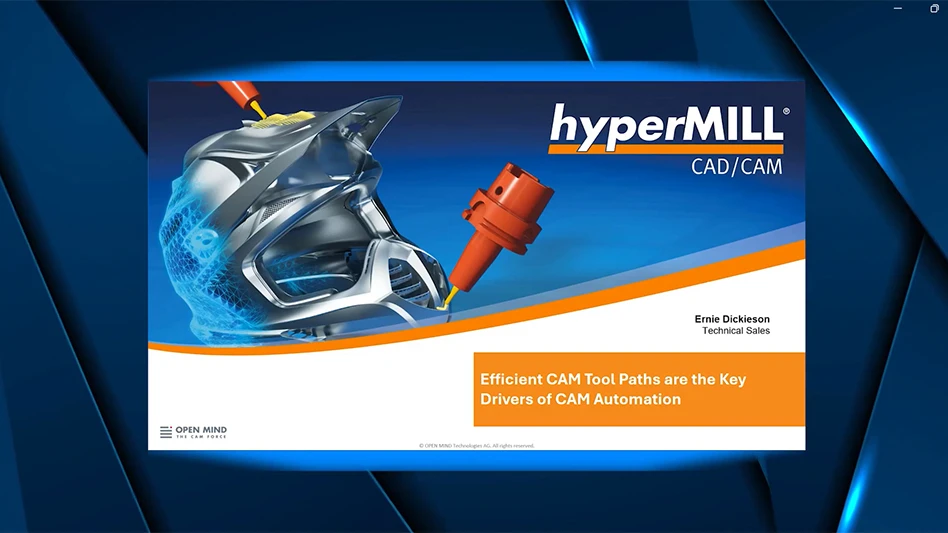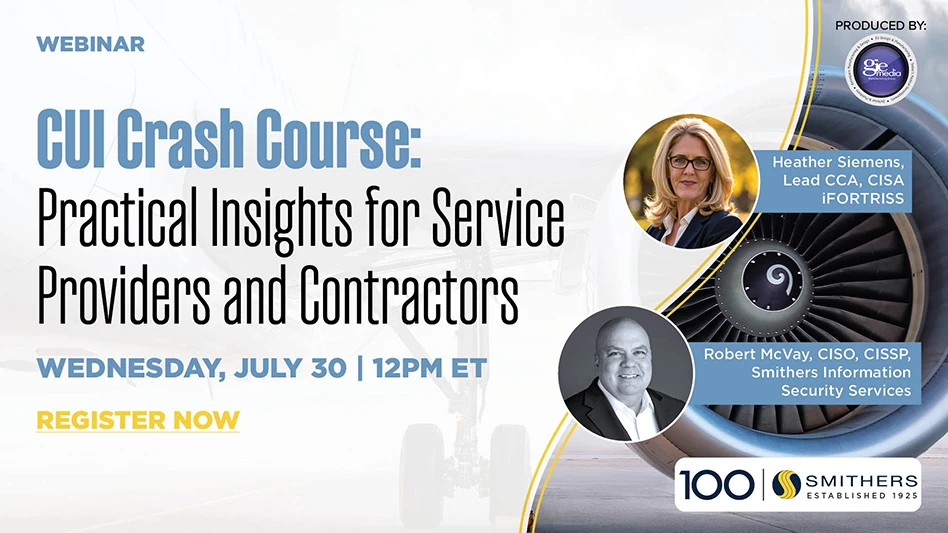
In recent years, there is a clear industry trend blurring the lines between an automated system and a tool. The resulting mechatronic advanced manufacturing systems drive down the costs and risks of aerostructure manufacturing and assembly.
In the world of aerospace, tooling has a range of meanings, from a drill bit to a layup mold. For purposes of this discussion, tooling predominantly refers to assembly jigs that are used to ensure the precise assembly of aerostructures. An automated system refers predominantly to drilling, countersinking, fastening, and sealant applications, as well as the holding fixtures that enable automation.
In years past, suppliers were distinct. Tooling suppliers provided assembly jigs that ensured repeatability and accuracy, but offered no intelligence or automation. Automation providers supplied one machine designed to do one job.
For example, a customized wing fastening cell was engineered for each program, and when the program was complete, the machine was obsolete. Only high-rate, long-term programs could justify the cost of an automated system and the quality, health, and safety benefits that came with it. Purchasing channels were distinct, with separate procurement teams and budgets for recurring and non-recurring expenses. The suppliers had limited communication throughout the design and build process. Everything came together – or didn’t – for the first time on the factory floor.
In recent years, programs have automated the bulk of the assembly work, drilling, fastener insertion, and full fastening. In addition to driving out recurring costs, this approach reduces non-recurring costs by eliminating some of the fixturing and tooling required in manual operations. As automation becomes more pervasive, tooling is becoming an integral part of the automation system and, in some cases, the line is completely blurred as tooling and automation systems are blended into a common work center.
Light, flexible automation
Another trend is towards light, flexible automation, which reduces capital expenditure, speeds return on investment (ROI), and shortens the payback period. Automated drilling and fastening continues to become smaller and cheaper due to rapid technological advancements. Today, multi-purpose end effectors (tools at the end of a robotic arm) sit directly on the assembly jig or holding fixture to access the part and augment the work of skilled operators.
Light, flexible automation is often less capital-intensive because installation costs are minimized and end effectors can be added as needed. It is scalable with rate increases, ensuring that non-recurring costs are commensurate with production rates. In some cases, one multi-purpose end effector can be moved from tool to tool, creating the equivalent of several machines from one drill spindle. Manufacturers can then increase to one end effector per jig (or more), as increasing rates justify an increasing investment. This interchangeability has been common in automotive applications for decades and is now finding a place in aerospace because investment can be scaled along with production rates. Because they are no longer custom-built, interchangeable end effectors can be repurposed for another part or program.
Integration
Robust integration is imperative to reducing risk because it ensures combined tooling and automation systems work seamlessly. The integrator must bring together expertise in process knowledge, tooling, and automation to provide customers with a turnkey process.
Ray Kauffmann, vice president of Ascent Integration’s U.S. operations, says, “With advanced manufacturing systems, it is not enough for a supplier to represent automation only or tooling only. They must be proficient in all the manufacturing systems infrastructure disciplines, including access, conveyance, machinery, and integration.”
The role of the integrator includes the enabling tools, equipment, and processes to handle, locate, and support assembly operations that yield a conforming product, ready for shipment, that supports the production-rate commitment. Aerospace OEMs, Tier 1, and Tier 2 aerostructure manufacturers expect broader skills and more support in implementing assembly lines, and it is especially critical when blending tooling and automation.
In the real world, this presents a challenge because tooling and automation are historically purchased separately and are still often viewed separately. Systems are conceived and funded with two channels in mind. Manufacturers historically play the integrator role and, left to make everything work together, assume all of the risk. When elements don’t work together, the manufacturer can find itself in a technical standoff between the engineering teams of disparate suppliers who have not been given ample opportunity to (or choose not to) collaborate.
The interface between tooling and automation can lead to implementation delays as two philosophies are merged. Once the problems are identified, expensive change orders might be incurred to make the various elements work together. If managed separately, costs and changes are the manufacturer’s responsibility, not the suppliers.
Instead of developing and specifying detailed solutions, many manufacturers are acting as smart customers: define the performance targets – such as production rate or cycle time – and let sophisticated suppliers offer innovative solutions. The integration team defines the scope, executes, and manages suppliers and partners to deliver a turnkey solution.
Collaboration and transparency between tooling and automation allows gaps to be bridged early, which minimizes changes throughout the process and reduces the economic impact of bringing the systems together. According to Paul Walsh, president & COO of Ascent Tooling Group, this harmonization begins in the design phase, continues through manufacturing, and includes feeding back learning through the manufacturing and installation process to improve future designs.
“We design better because we manufacture. We manufacture better because we design,” Walsh says.
At the time of installation, the integrator has minimized uncertainty that the elements will not fit together but, in case they do not, the integrator – not the manufacturer – is responsible for the expense of reconciling them. An integrator further supports the full product lifecycle, including documentation, training, and ongoing service and support.
Case study: Business jet wing assembly
In 2015, Ascent Integration & Automation Group was hired to retrofit the wing assembly line of a large business jet. Ascent’s global team of project engineers was able to minimize the investment and halve the lead time by building 5-axis automation around the existing tooling.
Ascent developed an arc-frame system to automate spar drilling, which required near-complete-circumferential access for the end effecter, coupled with a long X-axis travel. Manual drilling of the spars required approximately 30 tool pairs, consisting of a positional fixture and a drill template. The positional tooling has become the machine structure, making it hard to draw a line where the tooling ends and the machine begins. The drill templates were eliminated, along with the associated handling and storage costs.
Ascent also automated drilling and countersinking of the metallic wing along the outer mold line (OML), where it was common to the substructure. The existing assembly jig was retrofitted with a square-frame driller capable of traversing the entire length of the wing. In essence, the square-frame driller is the same as the arc-frame driller, in that the same interchangeable components have been applied to a new geometry. The connections for the end effectors are standard, as are the Brown Aerospace end effectors, which can be moved between the drillers to meet production targets or make up for delays.

The customer noted that cycle time was reduced by more than would be expected in a typical automated system. When a part must be moved from an assembly jig to a machine, such as a gantry or even a robotic system, this transfer required a large amount of cycle time to perform non value-added work. The Ascent solution eliminated this step and the customer reported a reduction of 30 to 180 minutes per cycle, depending on the part’s size and weight, based solely on not transferring out of the tool to a separate machine.
Ascent’s customer also noted an increase in accuracy. Unlike a typical CNC-and-gantry system, the vision system of the Brown Aerospace end effectors resyncs the location on the part at intervals. This eliminates accumulation of tolerances along the X-axis. Resyncing also makes it possible to use existing tools because the machine is empowered by the vision system, not reliant on the precision of the tool. After the retrofit, drilling along the OML was repeatable to 0.004" (0.10mm) and accurate to 0.009" (0.23mm).
Conclusion

Ascent Aerospace CEO Brian Williams observes, “The advanced manufacturing systems Ascent has delivered have dramatically improved build efficiencies while minimizing cost and risk. Our customers return to us to help support rate increases for existing airplanes, as well as for the introduction of new airplanes and factories. We are preparing for an industry-wide convergence of tooling with automation. To remain in the forefront and bolster our automation capabilities, we recently added Gemcor, for automated riveting, to our portfolio of businesses.”
Ascent Aerospace
About the author: Jay Wakenshaw is CCO at Ascent Aerospace. He can be reached at info@ascentaerospace.com or 1.877.936.4906 .

Explore the August September 2016 Issue
Check out more from this issue and find your next story to read.
Latest from Aerospace Manufacturing and Design
- Piper Aircraft receives its largest ever domestic trainer order
- Miniature, high force-to-size linear voice coil servo motor
- MagniX, Robinson to develop battery electric R66 helicopter
- Zero-point clamping modules
- Hartzell electric engine propeller earns FAA approval for AAM
- Thin profile flame and thermal barrier
- Guill Labs offer materials and extrusion testing
- High production vertical honing systems





